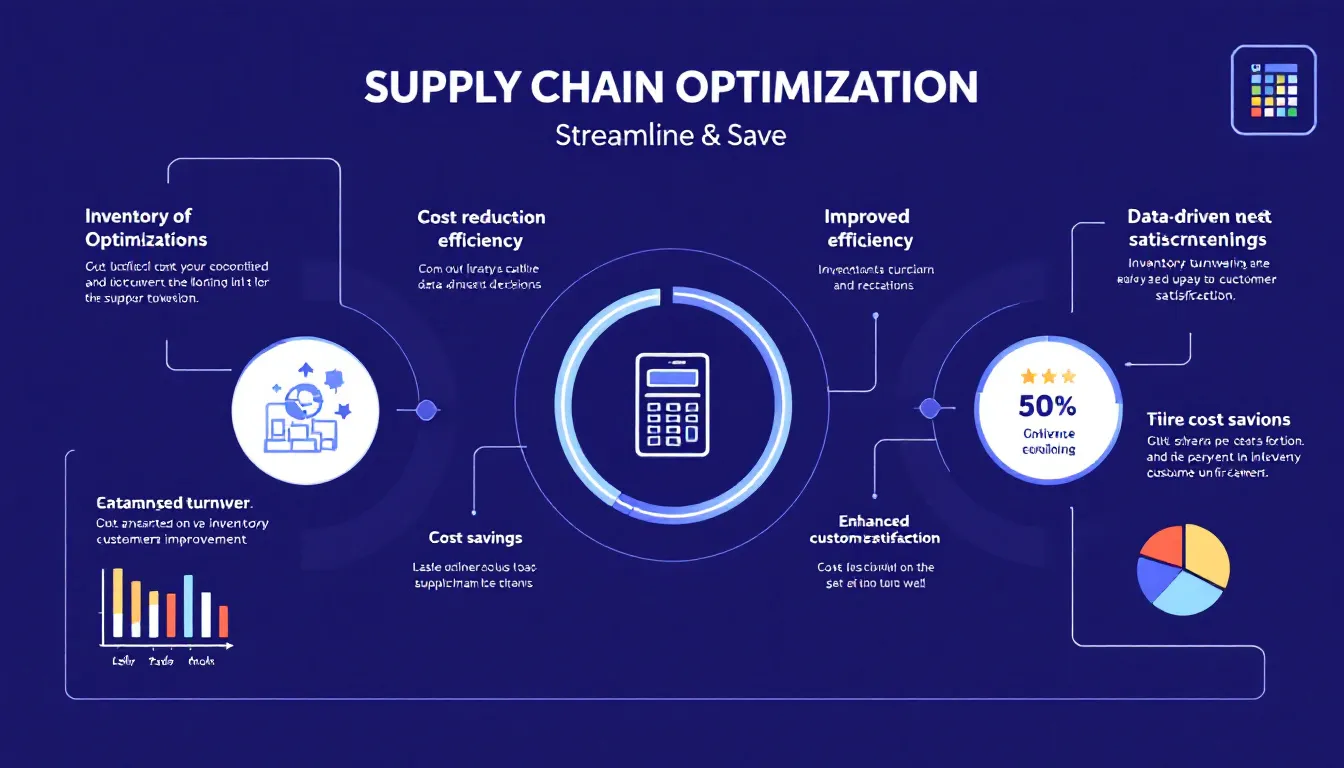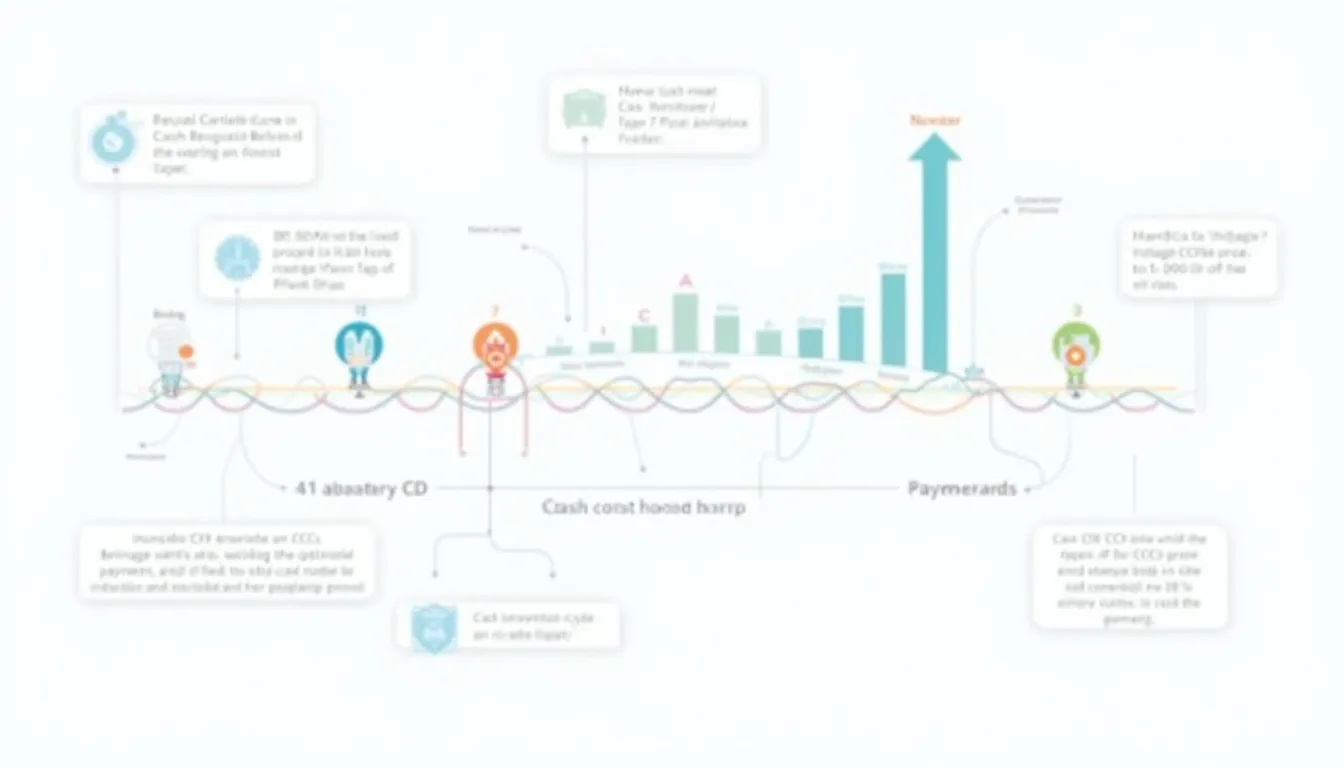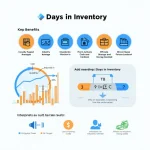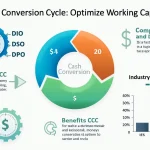Is this tool helpful?
How to Use the Supply Chain Optimization Calculator Effectively
Step-by-Step Guide to Completing the Calculator
To maximize the benefits of the Supply Chain Optimization Calculator, carefully enter accurate data in the following fields:
- Product or Service Name: Enter the specific product or service you want to optimize. Example inputs: “Wireless Earbuds Pro” or “Cloud-based CRM Software.”
- Annual Demand (in units): Provide your estimated yearly sales volume. Example inputs: 250,000 units for a consumer gadget or 1,200 subscription licenses.
- Average Lead Time (in days): Specify the typical number of days from order placement to receipt. Example inputs: 45 days for overseas shipments or 7 days for local suppliers.
- Current Inventory Turnover Ratio (optional): If known, enter how many times your inventory cycles per year. Example inputs: 3.8 for slower-moving products or 9.2 for fast-moving items.
- Major Suppliers and Locations (optional): List key suppliers along with their geographic locations. Example inputs: “Supplier X – Germany, Supplier Y – Mexico” or “Supplier A – USA, Supplier B – India.”
- Budget Constraints (optional): Indicate any financial limits allocated for supply chain improvements. Example inputs: “€300,000 annual optimization budget” or “£150,000 set aside for logistics enhancements.”
- Submit the Form: After entering all applicable information, click the button to generate your detailed supply chain optimization report.
Upon submission, the calculator analyzes your data and delivers actionable insights, including inefficiency identification, inventory management strategies, recommended order quantities, and practical steps to enhance your supply chain operations.
Understanding the Supply Chain Optimization Calculator: Definition, Purpose & Benefits
What is Supply Chain Optimization?
Supply chain optimization involves refining every aspect of the supply chain—from procurement and production to inventory and distribution—to improve operational efficiency and reduce costs. This calculator serves as a powerful tool to help businesses navigate complex supply chain challenges through data-driven recommendations tailored to their unique needs.
Why Use This Supply Chain Optimization Calculator?
- Streamline Operations: Identify bottlenecks and streamline workflows to boost overall supply chain performance.
- Reduce Costs: Optimize inventory levels, reorder points, and lead times to minimize holding and ordering expenses.
- Improve Customer Satisfaction: Ensure timely deliveries and reduce stockouts by managing inventory more effectively.
- Data-Driven Decisions: Leverage quantitative analysis to make informed supply chain management choices.
- Enhance Supplier Collaboration: Gain insights into supplier performance and lead times for better negotiation and planning.
- Gain Competitive Advantage: Quickly adapt to market changes with a flexible and optimized supply chain.
Practical Uses and Applications of the Supply Chain Optimization Calculator
1. Determining Optimal Order Quantities
The calculator assists in calculating the Economic Order Quantity (EOQ), which balances ordering costs and inventory holding costs to minimize total expenses. The EOQ formula is represented by:
$$ EOQ = \sqrt{\frac{2DS}{H}} $$Where:
- D = Annual demand
- S = Ordering cost per order
- H = Holding cost per unit per year
Example: For an annual demand of 80,000 units, ordering cost of $150, and holding cost of $12 per unit:
$$ EOQ = \sqrt{\frac{2 \times 80,000 \times 150}{12}} = \sqrt{2,000,000} = 1447 \text{ units (rounded)} $$This means ordering approximately 1,447 units per purchase will optimize inventory costs.
2. Calculating Reorder Points for Timely Procurement
To avoid stockouts, the calculator computes the Reorder Point (ROP) based on demand and lead time:
$$ ROP = (d \times L) + SS $$Where:
- d = Average daily demand
- L = Lead time in days
- SS = Safety stock
Example: If daily demand is 250 units, lead time is 20 days, and safety stock is 1,000 units:
$$ ROP = (250 \times 20) + 1,000 = 6,000 \text{ units} $$The calculation indicates that a new order should be placed when inventory reaches 6,000 units.
3. Optimizing Safety Stock Levels to Mitigate Risk
Safety stock serves as a buffer against demand variability and supply delays. The formula used is:
$$ SS = Z \times \sigma_d \times \sqrt{L} $$Where:
- Z = Z-score for desired service level (e.g., 1.28 for 90%, 1.645 for 95%)
- σd = Standard deviation of daily demand
- L = Lead time in days
Example: With a 90% service level (Z = 1.28), demand standard deviation of 15 units, and 10 days lead time:
$$ SS = 1.28 \times 15 \times \sqrt{10} = 60.7 \approx 61 \text{ units} $$Maintaining approximately 61 units in safety stock reduces the risk of stockouts with 90% confidence.
4. Assessing Inventory Turnover Efficiency
The calculator evaluates inventory performance using the Inventory Turnover Ratio (ITR):
$$ ITR = \frac{\text{Cost of Goods Sold}}{\text{Average Inventory Value}} $$Example: If cost of goods sold is $3,500,000 annually and average inventory is $700,000:
$$ ITR = \frac{3,500,000}{700,000} = 5 $$This indicates inventory is replenished five times yearly, signaling inventory management efficiency.
Industry-Specific Applications and Use Cases
Manufacturing
- Optimize raw material ordering and production scheduling through accurate EOQ and ROP calculations.
- Set safety stock levels to buffer supply chain disruptions and reduce downtime.
- Streamline supplier collaboration by analyzing lead times and delivery performance.
Retail
- Balance inventory stock across multiple sales channels to improve turnover and reduce markdowns.
- Forecast seasonal demand and adjust reorder points accordingly for peak periods.
- Identify opportunities for centralized warehousing and efficient distribution.
Food & Beverage
- Manage perishable goods with precise order quantities and reorder timing to minimize waste.
- Analyze supplier reliability and lead times for time-sensitive ingredients.
- Optimize inventory across multiple outlets to maintain freshness and availability.
Pharmaceutical
- Maintain required safety stocks for critical medicines while limiting excess inventory.
- Evaluate transportation costs and lead times to ensure compliance with regulatory requirements.
- Support cold chain logistics by aligning inventory levels with temperature-sensitive product needs.
Frequently Asked Questions (FAQ)
Q1: How often should I use the Supply Chain Optimization Calculator?
Use the calculator regularly—ideally quarterly—or whenever major changes occur in your supply chain, such as launching new products, onboarding suppliers, or shifts in market demand.
Q2: Can this tool analyze multiple products at once?
Currently, the calculator analyzes one product or service at a time. For multiple items, run separate calculations to obtain individualized optimization insights.
Q3: How do I handle seasonal variations in demand?
Perform separate calculations for peak and off-peak seasons by adjusting annual demand and lead time inputs accordingly, enabling you to tailor inventory and ordering strategies throughout the year.
Q4: What if I lack some data points?
Provide all available information. The calculator will still generate helpful recommendations based on required fields, improving accuracy as you add optional data.
Q5: How can I implement the recommended optimizations?
Follow the detailed suggestions in the generated report, focusing on inventory management, supplier negotiations, and process improvements. Involve cross-functional teams from procurement, operations, and finance to ensure effective implementation.
Q6: Does this calculator assist in supplier evaluation?
While it does not directly select suppliers, it provides insights into supplier lead times and reliability that support informed supplier management decisions.
Q7: How should I handle multiple currencies in global supply chains?
Convert all costs to a consistent currency before entering data to ensure accurate cost comparisons and optimization across diverse regions.
Q8: Can the calculator optimize transportation routes?
The focus is on inventory and order optimization; however, lead time and supplier location data can inform broader transportation planning strategies.
Q9: How does this tool support supply chain risk management?
By calculating safety stock and analyzing supplier performance, the calculator helps create more resilient supply chains with decreased vulnerability to disruptions.
Q10: Is this tool suitable for small businesses?
Absolutely. Small and medium enterprises can leverage this calculator to reduce costs, improve inventory efficiency, and strengthen their supply chain operations, leveling the playing field with larger competitors.
Important Disclaimer
The calculations, results, and content provided by our tools are not guaranteed to be accurate, complete, or reliable. Users are responsible for verifying and interpreting the results. Our content and tools may contain errors, biases, or inconsistencies. Do not enter personal data, sensitive information, or personally identifiable information in our web forms or tools. Such data entry violates our terms of service and may result in unauthorized disclosure to third parties. We reserve the right to save inputs and outputs from our tools for the purposes of error debugging, bias identification, and performance improvement. External companies providing AI models used in our tools may also save and process data in accordance with their own policies. By using our tools, you consent to this data collection and processing. We reserve the right to limit the usage of our tools based on current usability factors.







